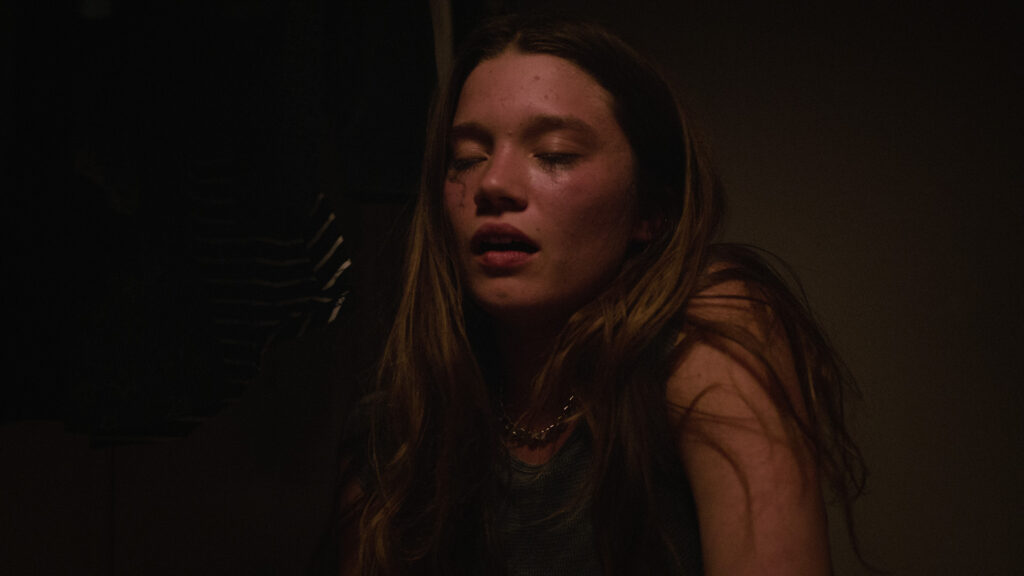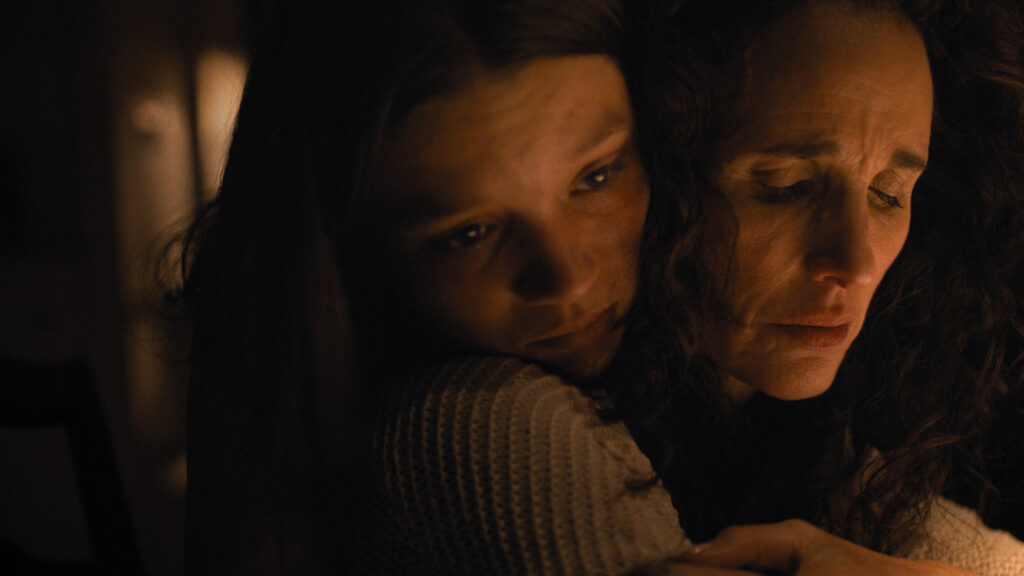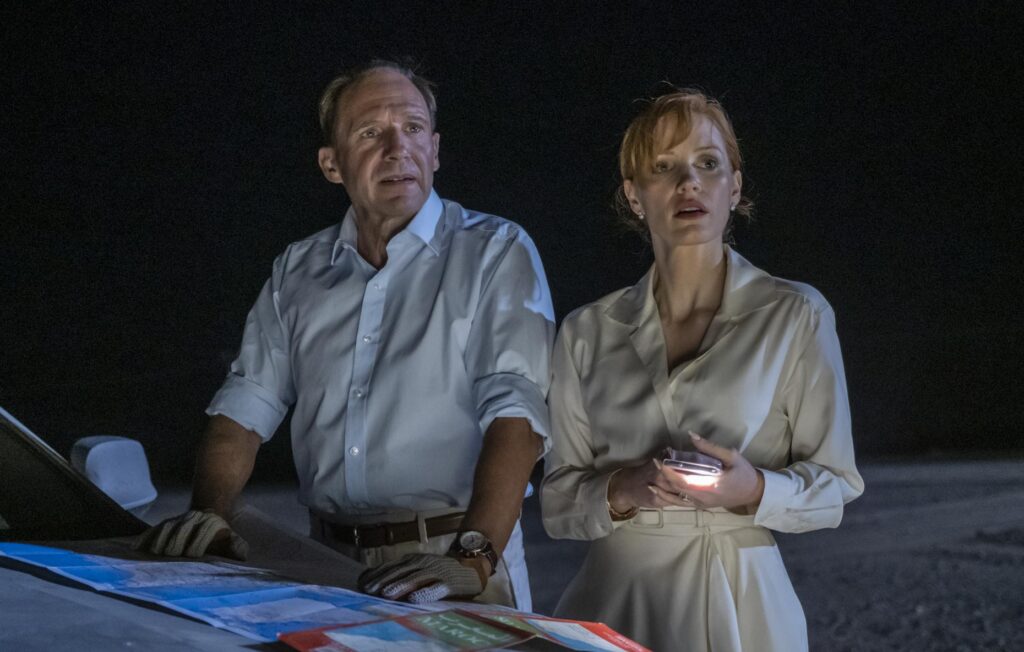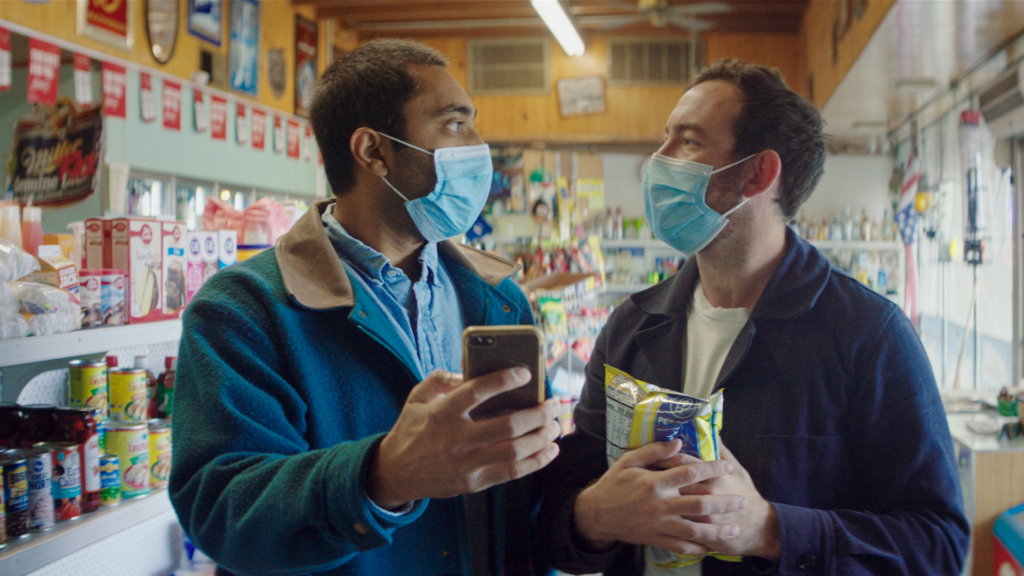January 12, 2023
by Carla Hay
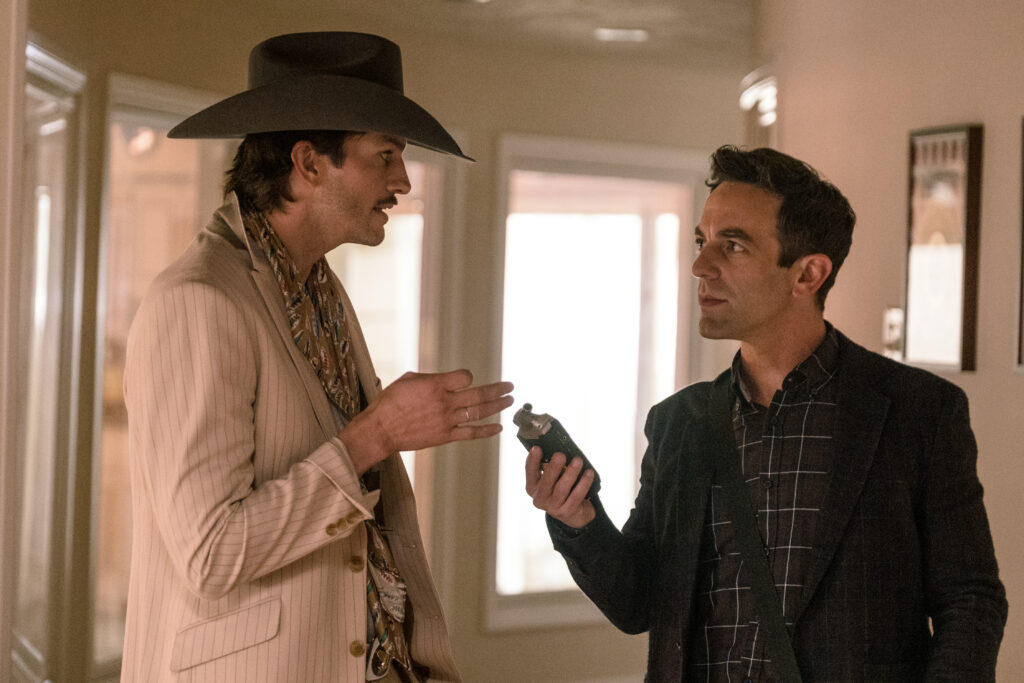
Directed by B.J. Novak
Culture Representation: Taking place in Texas and briefly in New York City, the comedy/drama film “Vengeance” features a predominantly white cast of characters (with some African Americans and Latinos) representing the working-class and middle-class.
Culture Clash: A New York City podcaster is persuaded to go to rural Texas to investigate the drug-overdose death of a woman whom he briefly dated.
Culture Audience: “Vengeance” will appeal primarily to people who are fans of star/filmmaker B.J. Novak and movies about crime investigations that take dark comedic jabs at society.

The comedy/drama “Vengeance” puts a satirical spin on a familiar movie concept of a stranger coming to an area to investigate a possible crime, with the stranger feeling like a “fish out of water.” The stranger then usually lets judgment get clouded by internal prejudices, as well as the prejudices of people around the stranger. “Vengeance” makes some of its cultural stereotypes too broad and heavy-handed, and the movie’s ending could have been better. Overall, the story can hold viewers’ interest, as long as there’s tolerance for what the movie is saying about personal biases.
B.J. Novak, a former co-star and writer of the U.S. comedy TV series “The Office,” makes his feature-film directorial debut with “Vengeance,” a movie that he also wrote. “Vengeance” starts out very strong with biting comedy. And then, it meanders back and forth between an intriguing investigation and clumsily handled culture shock, with jokes that are hit and miss. The ending of “Vengeance” is meant to be a surprise twist, but observant viewers can see some clues leading up this ending and can figure out why Novak chose to end the movie this way.
In “Vengeance” (which had its world premiere at the 2022 Tribeca Film Festival), Novak portrays Ben Manalowitz, a politically liberal podcaster who lives and works in New York City. Ben, who is also a writer for The New Yorker, is every cliché (for better or worse) of what many people think about a college-educated, New York City media person. Depending on someone’s perspective, Ben is either well-versed and knowledgeable about many topics, or he’s a a smug intellectual snob.
The movie opens with a hilarious scene of Ben and musician John Mayer (portraying himself) having a conversation at a rooftop party in New York City. The conversation topic for these two bachelors is dating. John says, “I don’t ever want to go past knowing what someone’s parents do for a living. If I know what someone has done for a living, I’ve hung too long.”
Ben replies in agreement: “Or siblings. Why does anyone care about your siblings, especially so early [of meeting a potential partner]? Has that ever changed whether you want to date somebody?” John says, “People say guys like us are afraid of commitment. No, we’re afraid of commitment to something we can’t get out of.”
Ben adds, “There’s no such thing as commitment. Fear of commitment is fear of regret.” John replies, “100%. Or fear of intimacy. Please. I’m intimate with everybody.” If only “Vengeance” had more of this type of banter in the movie, it would have been a lot funnier. Viewers won’t get to see much of Ben’s life in New York City, because he will soon be plunged into an unexpected investigation in rural Texas.
It just so happens that Ben wants to do a new investigative series for his podcast, so he pitches an idea to his podcast producer Eloise (played by Issa Rae), who is smart and sarcastic. Ben says that he wants to do a series about why the United States is so divided. However, as he tells Eloise his theory: “America isn’t divided by space. America is divided by time.”
Eloise replies, “Not every white guy in New York needs to have a podcast. You got the verified checkmark. You got The New Yorker position.” Ben says, “I want something more. I don’t just want to be writer. I want to be a voice. As dorky as it sounds, I care about America.”
At home one night, Ben is asleep when he is woken up by the sound of his phone ringing. The person on the other line is sobbing, and he identifies himself as Ty Shaw (played by Boyd Holbrook), who is a complete stranger to Ben. Ty lives in a rural part of western Texas, about a five-hour drive away from the city of Abilene. It’s a very politically conservative part of Texas that has almost the opposite of the environment and lifestyle that Ben has in New York City.
At first, Ben doesn’t know the reason for Ty’s call, until Ty tells Ben that Ty is the older brother of Abilene “Abby” Shaw (played by Lio Tipton, in flashbacks), who recently died of an opioid overdose at a party in a Texas oil field. Ben and Abby had a fling some years ago that he almost forgot about until Ty’s phone call.
Ty is under the impression, based on the way Abby talked about Ben, that Ben and Abby were in a serious, long-distance relationship. The reality is that Ben and Abby haven’t seen or been in contact with each other for years. Ben tries to tell Ty this information, but Ty is so grief-stricken and insistent that Ben was the love of Abby’s life, Ben goes along with it.
It isn’t long before Ty has convinced Ben to go to Texas for Abby’s funeral, where Ben is asked to give a eulogy about Abby. At the funeral, Ben finds out that Abby was an aspiring singer, so he awkwardly says in his speech: “I know she loved music. She will always be a song in our hearts.”
Ty soon tells Ben that he believes that Abby’s overdose death was murder. Ty also insists that he and Ben are going to track down whoever allegedly murdered Abby. Ty says to Ben: “You and me, we’re the men in her lives. And they fucked with the wrong two guys.”
Ben tells Ty: “I don’t avenge deaths. I don’t live in a Liam Neeson movie.” Ty responds, “You kind of look like a guy in a Liam Neeson movie.” Ty names “Schindler’s List” as “my least-favorite Liam Neeson movie. Huge downer.” Ty adds, “Stay down here and avenge Abby’s death with me.”
Ben doesn’t take Ty’s murder theory seriously, but Ben sees this investigation as the perfect idea for his next podcast series. He tells Eloise about it and says, “This isn’t a story about vengeance. It’s a story about the need for vengeance, the meaning of vengeance.” Eloise asks, “Dead white girl?” Ben replies, “The holy grail of podcasts.”
And so, Ben ends up getting to know Ty and the rest of the loud and boisterous Shaw family. They include Ty’s three other siblings: 24-year-old sister Paris (played by Isabella Amara), who’s an aspiring filmmaker; 17-year-old sister Kansas City (played by Dove Cameron), who’s an aspiring “celebrity”; and 9-year-old El Stupido (played by Eli Abrams Bickel), who isn’t called by any other name in the movie.
The siblings’ mother is feisty Sharon Shaw (played by J. Smith-Cameron) and grandmother Carole Shaw (played by Louanne Stephens), who is very racist against people of Mexican heritage. One of the movie’s jokes about Carole is that she doesn’t know that Texas lost the battle of Alamo. Unfortunately, all of the Shaw family characters except for Ty are very underdeveloped and are nothing but hollow stereotypes.
Ben and Ty are told that Mexican drug dealers probably killed Abby. During this investigation, Ben meets and interviews several local people who might have information on what happened to Abby on the night that she died. These locals include a smarmy music producer named Quentin Sellers (played by Ashton Kutcher), who was working with Abby on some music recordings; a drug dealer named Sancholo (played by Zach Villa); and County Sheriff Jimenez (played by Rio Alexander), who is every cliché of an unsophisticated cop.
“Vengeance” has some subtle and not-so-subtle comedy poking fun at stereotypes of “city slickers” and “country hicks.” Ben is doing a podcast series about vengeance, but it begins to dawn on him that he is experiencing his other podcast series idea about America being a divided country. Not surprisingly, Ben gets some resistance to his investigation because many of the locals think that Ben is an “outsider” who can’t be trusted. The cast members give competent performances, although enjoyment of “Vengeance” will be affected by how much a viewer thinks Kutcher is convincing or not convincing in portraying a Texan.
All of the characters in “Vengeance” are portrayed as alternately amusing or annoying, which seems to be the movie’s point. “Vengeance” doesn’t point fingers at any particular lifestyle or political belief as better than the rest. The movie shows there’s something irritating and ultimately toxic about any mindset that wants to lump people of different cultures into one degrading stereotype. And sometimes, when people get consumed by an “us versus them” mentality, they can end up with the worst traits of the people they despise.
Focus Features released “Vengeance” in U.S. cinemas on July 29, 2022. The movie was released on digital and VOD on August 16, 2022, and on Blu-ray and DVD on September 20, 2022. Peacock premiered “Vengeance” on September 16, 2022.







